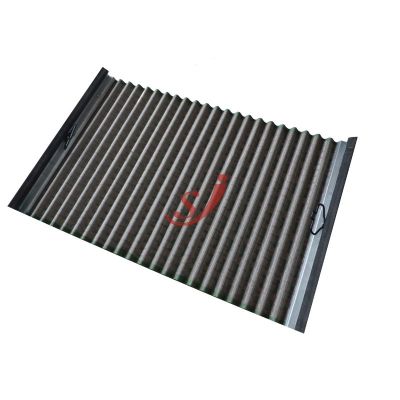Three main reasons for screen blockage
Excessive material input
The screening capacity of the vibrating screen has its limitations. When the amount of material input exceeds its processing capacity, it is easy to cause the screen to be blocked. Especially in the production process, small particles of material can easily penetrate into the screen holes. Once they accumulate too much, it will become very difficult to clean them up.
Screen wear
After the screen is used for a long time, the surface may be worn, causing the screen holes to deform or become larger, which makes it impossible for the material to pass normally and form a blockage.
The material particles are too small
The size of the Shale Shaker Screens holes directly determines whether the material can pass smoothly. When the material particles are too small, they are easy to accumulate in the screen holes. Once they accumulate to a certain extent, it will become quite troublesome to repair them.
In response to the above problems, the following measures are taken to solve them
1. Ensure the correct installation and use of the vibrating screen. During operation, control the amount of material input to avoid particles that are too small. At the same time, pay attention to the length of time the screen is used to avoid wear or deformation caused by long-term use.
2. Clean the dust and residue on the screen regularly. This helps reduce the possibility of screen blockage and maintain the screening efficiency of the screen.
Additional reading:
3. Once the screen is found to be worn or damaged, it should be replaced in time to avoid affecting the screening efficiency and the service life of the equipment.
4. When choosing a screen, it should also be scientific and reasonable. For example, for the situation where fine powder materials below 5mm need to be screened, a special fine screen should be selected and regular dust cleaning should be carried out.
5. For some special materials, targeted anti-blocking screens can also be selected, such as ball screens, multi-angle screens, etc.
6. For fine powder materials, high-pressure airflow perforation technology can also be considered to solve the problem of material blockage.
7. When the screen is found to be blocked, the power supply of the screen machine should be turned off immediately to prevent the material from continuing to flow back or causing secondary crushing to damage the equipment. Then, use a special cleaning tool to remove the blocked material and clean the screen to restore the screening efficiency.
8. It is also very important to inspect and maintain the screen machine regularly. Timely handling of screen blockage problems can avoid equipment damage and ensure smooth production.
In general, the clogging problem of vibrating screens requires us to take comprehensive measures, starting from controlling the amount of material put in, regular cleaning, replacing the screen, scientifically selecting the screen type, using anti-clogging screens, and adopting technology. Only in this way can we ensure that the vibrating screen has a better screening effect and improve production efficiency.
Comments
Please Join Us to post.
0